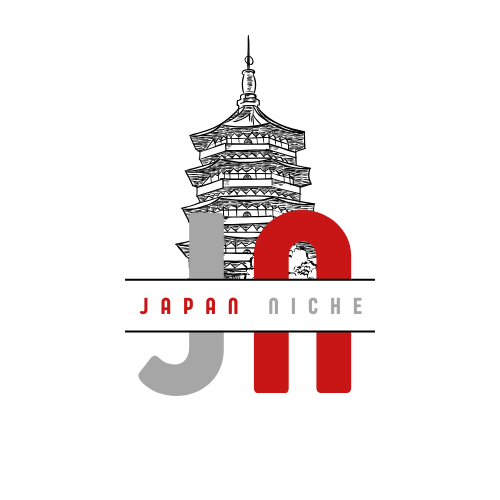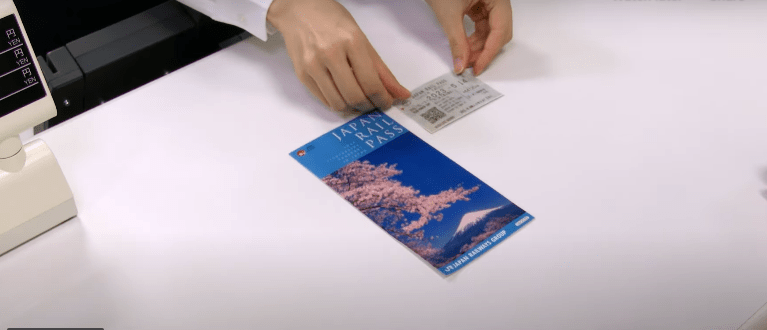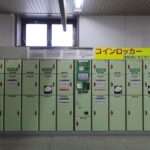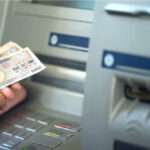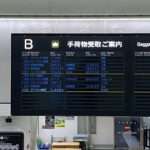Did you know that a 7-day Japan Rail Pass pays for itself with just one round-trip between Tokyo and Kyoto? As someone who’s used the JR Pass multiple times across Japan, I can tell you that making the right decision about purchasing this pass can literally save you hundreds of dollars on your trip! In 2024, with train prices continuing to rise in Japan, understanding whether the Japan Rail Pass is worth it for your specific itinerary has never been more crucial. Let’s dive into everything you need to know about the JR Pass, from pricing to routes, and help you make the best decision for your Japanese adventure!
What is the Japan Rail Pass? The Basics
The Japan Rail (JR) Pass is a special ticket that offers unlimited travel on Japan Railways (JR) trains, a network that covers most of Japan’s cities and regions. It’s designed primarily for international tourists and provides a cost-effective and convenient way to explore the country. Here’s a breakdown of what you need to know about the JR Pass, including eligibility requirements, types, and recent updates.
1. What is the Japan Rail (JR) Pass, and Who Can Use It?
The Japan Rail Pass is a multi-day pass granting unlimited access to the JR network of trains, which includes:
- Shinkansen (bullet trains) for high-speed travel across Japan’s regions
- Limited express and local JR trains within metropolitan and rural areas
- JR Buses and ferry routes, including the JR Miyajima ferry and some highway buses
The JR Pass is designed specifically for foreign tourists visiting Japan under a “temporary visitor” status, which permits short stays of up to 90 days. Japanese citizens residing outside Japan may also be eligible in some cases, provided they meet certain residency requirements.
2. Types of JR Passes: Duration and Pricing
The JR Pass comes in three duration options, allowing flexibility based on travel plans:
- 7-Day Pass: Ideal for travelers on shorter trips looking to cover major destinations like Tokyo, Kyoto, and Osaka.
- 14-Day Pass: Suitable for extended vacations or travelers planning to visit multiple regions.
- 21-Day Pass: The best option for longer stays or those with comprehensive travel itineraries covering various parts of Japan.
Each of these pass types has two classes:
- Ordinary Class (Standard): Basic access to all JR trains except for the fastest Nozomi and Mizuho Shinkansen lines.
- Green Class (First-Class): Offers more spacious seating, quieter carriages, and an overall premium experience, ideal for those wanting a bit more comfort during travel.
Standard vs. Green Car Comparison
| Feature | Standard Pass | Green Car (First-Class) Pass |
|---|---|---|
| Seating Comfort | Regular seats with ample legroom | Wider seats, recline options, more legroom |
| Cabin Quietness | Moderate | Generally quieter due to fewer passengers |
| Passenger Volume | Higher | Lower, with more personal space |
| Extra Services | Minimal | Enhanced services in some cases, including designated luggage storage and complimentary amenities |
Green Car seats are generally available only on selected trains, so travelers looking for first-class experiences should confirm seat availability when booking.
3. Eligibility Requirements for Tourists
The JR Pass is exclusively available for foreign nationals visiting Japan on a Temporary Visitor Visa, allowing short stays. When purchasing or redeeming the JR Pass, tourists must present their passport and proof of the temporary visitor status stamped by Japanese immigration upon arrival.
- For Japanese Nationals: Citizens living abroad can also use the JR Pass if they meet specific eligibility criteria, such as proving residency outside Japan for an extended period. Documentation requirements vary, so checking in advance with JR is recommended.
4. Recent Changes and Updates to the JR Pass System in 2024
As of 2024, the JR Pass has undergone several updates to meet rising tourism demands and improve the traveler experience. Key changes include:
- Price Adjustments: The most notable update is the sharp price increase of approximately 70% for the JR Pass across all durations—7, 14, and 21 days. Although this adjustment reflects increased operating costs and infrastructure investments, it has led travelers to consider alternative options, like regional passes or individual tickets, particularly for shorter trips. The pass’s cost was revised in 2023, making the pass a greater investment but still cost-effective for travelers covering long distances.
- Enhanced Online Reservations: JR now allows for online seat reservations on more routes, making it easier for pass holders to plan and secure seats on desired trains before departure.
- New Eligibility Clarifications: Stricter enforcement of eligibility, especially for Japanese nationals residing abroad, requiring more documentation to validate residence.
- Added Services in Green Cars: Enhanced amenities for Green Car travelers on select routes, such as onboard Wi-Fi and larger luggage spaces, especially on long-distance and popular Shinkansen lines.
- Optional Access to Nozomi and Mizuho Shinkansen Lines: With this update, JR Pass holders now have the option to add Nozomi and Mizuho Shinkansen lines—the fastest Shinkansen routes—for an additional fee. These lines were previously excluded from JR Pass coverage, meaning this expansion can shorten travel times on major routes between cities like Tokyo, Osaka, and Fukuoka.
Complete Japan Rail Pass Pricing Breakdown 2024
Exploring Japan with a Japan Rail Pass (JR Pass) is a convenient way for tourists to travel across the country by rail. However, as of 2024, there have been notable updates in the pricing structure and options available. This guide provides a comprehensive breakdown of JR Pass prices, payment options, and additional fees to help travelers make informed decisions.
1. Current JR Pass Prices for 2024: Standard and Green Car Options
The JR Pass is available in two categories: Standard Class and Green Car (First Class). Passes come in several durations, making it possible to choose one that best fits your itinerary. Here’s an updated look at the prices for each pass in 2024:
Standard Class Pricing (All prices in Japanese Yen, JPY)
- 7-Day Pass: ¥50,000
- 14-Day Pass: ¥80,000
- 21-Day Pass: ¥100,000
Green Car Pricing (First-Class Upgrade)
- 7-Day Pass: ¥70,000
- 14-Day Pass: ¥110,000
- 21-Day Pass: ¥140,000
Note: These prices reflect the official rates as of 2024. Prices are subject to slight variations depending on exchange rates and additional vendor fees.
For more information visit their official website
2. Price Comparison: Official Vendors vs. Authorized Partners
The JR Pass can be purchased directly from JR’s official website or from authorized vendors and travel partners. The prices are largely similar, though certain vendors may offer minimal discounts or promotions.
- Official JR Pass website: Offers set prices with minimal additional fees, depending on the region of purchase and exchange rates.
- Authorized Vendors (e.g., Klook, Japan Experience): Typically match official prices but may offer slight promotional discounts or bundled deals with other travel services (e.g., SIM cards, regional rail passes).
Key Differences
- Exchange Rates: Prices in foreign currencies can fluctuate depending on the vendor’s exchange rate, which may differ slightly from the official rate.
- Convenience: Authorized vendors often provide local customer support and can simplify logistics, particularly for first-time travelers to Japan.
3. Exchange Rate Considerations and Best Payment Methods
Since the JR Pass is priced in Japanese yen, exchange rate fluctuations may impact the final cost when purchasing in other currencies. Here are some considerations to help optimize costs:
- Use a Currency-Optimized Credit Card: Some credit cards, like those without foreign transaction fees, can help you save on conversion costs.
- Compare Local Rates: If purchasing in person in Japan, verify rates to ensure the vendor is offering the JR’s set price in yen.
- Timing Matters: Exchange rates fluctuate, so it’s worth monitoring rates if you’re planning to buy in a currency other than yen.
4. How JR Pass Prices Have Changed in Recent Years
The JR Pass underwent a substantial price increase in 2023, impacting both the Standard and Green Car options. Here’s a comparison of the past prices and the current rates:
| Year | 7-Day (Standard) | 14-Day (Standard) | 21-Day (Standard) | 7-Day (Green) | 14-Day (Green) | 21-Day (Green) |
|---|---|---|---|---|---|---|
| 2022 | ¥29,650 | ¥47,250 | ¥60,450 | ¥39,600 | ¥64,120 | ¥83,390 |
| 2023/2024 | ¥50,000 | ¥80,000 | ¥100,000 | ¥70,000 | ¥110,000 | ¥140,000 |
Price increases in 2023 reflect expanded services covered by the pass, such as access to certain lines previously unavailable with the JR Pass. However, the steep rise has been a significant consideration for travelers, making alternative regional passes an option for some.
5. Hidden Costs and Additional Fees to Consider
When purchasing and using the JR Pass, be mindful of potential hidden costs and fees that can affect the overall expense of your trip:
- Seat Reservations: While reservations are generally free for JR Pass holders, peak seasons may require an early reservation to secure seats, especially in Green Car.
- Non-JR Lines: The JR Pass doesn’t cover all private rail lines in Japan, so additional fees might apply when using lines outside of the JR network.
- Baggage Fees: Large luggage (defined as bags over 160cm in combined dimensions) may incur fees on certain Shinkansen (bullet train) lines.
- Upgraded Services: Some trains offer premium services beyond the Green Car, such as the Gran Class on certain Shinkansen lines. The JR Pass does not cover these, and an upgrade fee will apply.
- Delivery Fees: For users who purchase the pass online for delivery, some vendors charge shipping fees. Additionally, expedited shipping may incur an extra cost if you’re purchasing close to your departure date.
Japan Rail Pass: Comprehensive Coverage Guide
The Japan Rail Pass (JR Pass) provides extensive coverage across Japan’s rail network, allowing travelers to use various types of trains operated by the Japan Railways (JR) Group. While it offers flexibility, there are some restrictions, as well as a few key routes that the pass doesn’t cover. This guide details the train types, popular routes, ticket cost savings, major lines included, restrictions, and non-JR lines to consider.
1. Covered Train Types with the JR Pass
The JR Pass is valid on most trains operated by the JR Group, making it suitable for long-distance and regional travel alike.
Train Types Covered by the JR Pass
- Shinkansen (Bullet Trains): Covers most Shinkansen lines with the exception of certain high-speed trains (see restrictions below).
- Limited Express Trains: High-speed, non-Shinkansen trains that connect major cities.
- Express Trains: Trains that stop at major stations only, popular for mid-range routes.
- Rapid and Local Trains: Slower trains that stop at more stations, suitable for short-distance travel within regions.
- Airport Express Trains: Includes Narita Express (Tokyo area) and Haruka Express (Kansai area), providing convenient access to airports.
- JR Buses: Some JR-operated buses, especially in rural areas.
- JR Ferries: Includes the JR ferry to Miyajima Island, near Hiroshima.
2. Popular Routes and Ticket Cost Savings with the JR Pass
For travelers planning multi-city journeys, the JR Pass offers significant savings over purchasing individual tickets, especially on popular Shinkansen routes.
| Route | JR Pass Coverage | Standard One-Way Ticket (Approximate) | JR Pass Savings |
|---|---|---|---|
| Tokyo ⇆ Osaka (Shinkansen) | Yes | ¥14,500 | ✓ |
| Tokyo ⇆ Kyoto (Shinkansen) | Yes | ¥13,000 | ✓ |
| Tokyo ⇆ Hiroshima (Shinkansen) | Yes | ¥18,000 | ✓ |
| Osaka ⇆ Fukuoka (Shinkansen) | Yes | ¥15,500 | ✓ |
| Narita Airport ⇆ Tokyo (Narita Express) | Yes | ¥3,000 | ✓ |
| Kansai Airport ⇆ Kyoto (Haruka Express) | Yes | ¥3,000 | ✓ |
Using a JR Pass on these routes can add up to significant savings, especially if traveling to multiple destinations by Shinkansen, which tends to be the most expensive rail service.
3. Major Train Lines and Networks Included in the JR Pass
The JR Pass is valid on the following major networks and lines:
Shinkansen Lines
- Tohoku Shinkansen: Tokyo to Aomori
- Hokkaido Shinkansen: Extends from Aomori to Hokkaido (Hakodate)
- Joetsu Shinkansen: Tokyo to Niigata
- Hokuriku Shinkansen: Tokyo to Kanazawa
- Tokaido Shinkansen: Tokyo to Osaka
- Sanyo Shinkansen: Osaka to Fukuoka (Hakata)
- Kyushu Shinkansen: Fukuoka to Kagoshima
Regional and Urban JR Lines
- Yamanote Line (Tokyo): Circular line covering central Tokyo’s main areas.
- Chuo Line (Tokyo): Connects Tokyo Station with western Tokyo areas.
- Osaka Loop Line: Covers central Osaka.
- Nara Line: Kyoto to Nara, a popular route for tourists.
- JR West and JR East Lines: Including JR trains in Kansai, Hokuriku, and the Tohoku regions.
- JR Hokkaido and JR Kyushu Lines: Extends coverage into the northern and southernmost regions of Japan.
These lines make it easy for JR Pass holders to navigate Japan’s major cities and popular tourist areas with minimal extra cost.
4. Restrictions and Blackout Periods
While the JR Pass offers excellent coverage, there are specific restrictions that travelers should be aware of:
Train Restrictions
- Nozomi and Mizuho Shinkansen Trains: The fastest trains on the Tokaido, Sanyo, and Kyushu Shinkansen lines, respectively, are not covered. Travelers must use Hikari, Kodama, or Sakura trains instead.
- Gran Class: While Green Car is included with the upgraded pass, Gran Class seating on certain Shinkansen lines is not covered. Upgrades are available at an additional cost.
- Non-JR Subway and Metro Lines: Subways in cities like Tokyo, Osaka, and Kyoto are not included in the JR Pass. Separate tickets are needed for these services.
Seasonal Blackout Dates
While there are generally no official blackout dates, trains can be extremely crowded during Japanese public holidays:
- Golden Week (early May)
- Obon Festival (mid-August)
- New Year’s Holidays (late December to early January)
Making seat reservations early (free for JR Pass holders) is advisable during these peak travel periods.
5. Non-JR Lines and Trains Not Covered by the JR Pass
Certain non-JR operated lines and services are not included with the JR Pass, which may require separate tickets or a regional pass.
Not Covered by the JR Pass
- Private Railways: Non-JR lines like the Odakyu Railway, Kintetsu Railway, and Tokyo Metro are not covered.
- Scenic and Sightseeing Trains: Lines such as the Fujikyu Railway to Mt. Fuji (Fuji Five Lakes area) and the Randen (Keifuku) Railway in Kyoto.
- City Subway Lines: Metro systems in Tokyo, Osaka, Kyoto, and other cities.
- Some Airport Lines: While Narita and Kansai airport express trains are covered, non-JR airport services like the Keisei Skyliner (Tokyo) and Nankai Airport Line (Osaka) require separate tickets.
Alternative Pass Options for Non-JR Lines
If your trip includes extensive travel on private railways, it may be beneficial to look into regional or city-specific passes, such as:
- Tokyo Metro 24-Hour Ticket: Covers Tokyo’s metro network.
- Kansai Thru Pass: Ideal for private railways in the Kansai area, including Osaka, Kyoto, Nara, and Kobe.
- Fujisan Pass: Covers transport to and around the Mt. Fuji area.
How to Calculate if the Japan Rail Pass is Worth It
The Japan Rail Pass can be a significant money-saver, especially for travelers planning to explore multiple cities and regions. However, its value depends on factors like trip duration, travel frequency, and destination choice. This guide offers a step-by-step approach to evaluating the JR Pass’s cost-effectiveness with sample itineraries, a break-even analysis, alternative regional passes, and useful budgeting tips.
1. Sample Itineraries: Cost Comparison with and without the JR Pass
Let’s look at a few sample itineraries to see how the JR Pass can save you money (or not) depending on your travel plans.
Itinerary 1: Classic Tokyo-Kyoto-Osaka-Hiroshima (7-Day Trip)
- Day 1-2: Tokyo
- Day 3: Travel from Tokyo to Kyoto (Shinkansen)
- Day 4-5: Kyoto and Osaka (Shinkansen round-trip)
- Day 6: Travel from Osaka to Hiroshima (Shinkansen)
- Day 7: Hiroshima to Tokyo (Shinkansen)
| Route | Ticket Cost (One-Way) | JR Pass Coverage |
|---|---|---|
| Tokyo to Kyoto | ¥13,000 | Yes |
| Kyoto to Osaka | ¥560 | Yes |
| Osaka to Hiroshima | ¥10,500 | Yes |
| Hiroshima to Tokyo | ¥18,000 | Yes |
| Total Individual Tickets | ¥42,060 | |
| 7-Day JR Pass Cost | ¥50,000 |
Verdict: For a 7-day trip with heavy Shinkansen use, the JR Pass covers major routes, providing convenience but not much savings. However, if additional trips like Narita Express or local JR lines within Tokyo and Osaka are included, the pass may pay off.
Itinerary 2: Tokyo and Surroundings (7-Day Trip)
- Day 1-3: Tokyo with day trips
- Day 3: Day trip to Nikko (round trip from Tokyo)
- Day 4: Tokyo to Hakone
- Day 5-6: Return to Tokyo
- Day 7: Narita Airport Transfer
| Route | Ticket Cost (Round-Trip) | JR Pass Coverage |
|---|---|---|
| Tokyo to Nikko | ¥5,000 | Yes |
| Tokyo to Hakone (Odawara) | ¥3,000 | Yes |
| Narita Express | ¥3,000 | Yes |
| Total Individual Tickets | ¥11,000 | |
| 7-Day JR Pass Cost | ¥50,000 |
Verdict: This itinerary shows a significant difference between ticket costs and the JR Pass. For light travel within one region, individual tickets are far more economical than a JR Pass, making a regional pass or specific-day tickets a better option.
2. Break-Even Analysis for Different Trip Durations
To determine if the JR Pass will save you money, you can calculate a break-even point based on the distance traveled and travel frequency. Here are some guidelines:
- 7-Day JR Pass: Worth it if you plan to travel long distances via Shinkansen (e.g., Tokyo to Hiroshima) or take multiple regional trips within a week.
- 14-Day JR Pass: Valuable for trips covering Tokyo, Osaka, Kyoto, Hiroshima, and possibly Northern Japan (like Sendai or Hokkaido).
- 21-Day JR Pass: Ideal for extensive travel, such as visiting multiple cities across Honshu, Kyushu, and Hokkaido. More cost-effective when traveling every few days.
If your total travel cost exceeds the price of the pass for the same period, it’s likely worth it.
3. Cost Calculator Tool: How to Use It for JR Pass Evaluation
Several websites and apps offer JR Pass cost calculators to simplify the decision-making process. you can visit Japan Rail Pass Calculator. Here’s how to use one effectively
- Input Your Itinerary: List your planned trips, including one-way or round-trip tickets and your starting and ending stations.
- Calculate Total Fare: The tool will display the total cost of individual tickets based on current JR fares.
- Compare with JR Pass Cost: The calculator will show whether the JR Pass is a better deal for your specific route.
Popular cost calculator tools include Japan Rail Pass Calculator and Hyperdia (train fare and schedule database), where you can look up fares and schedules to plan routes.
4. Regional Pass Alternatives for Specific Areas
If your travel is limited to a specific area, a regional pass may offer a more affordable and targeted solution:
- Tokyo Wide Pass: 3-day pass covering Tokyo, Nikko, Mt. Fuji, and Izu regions. Approximate cost: ¥10,000.
- Kansai Area Pass: Covers Osaka, Kyoto, Nara, Kobe, and surrounding areas, ideal for travelers based in Kansai. Options range from 1 to 4 days (¥2,400 – ¥6,800).
- Hokkaido Rail Pass: For exploring Hokkaido, available in 3, 5, and 7-day options, ranging from ¥16,500 to ¥24,000.
- Kyushu Rail Pass: Separate passes are available for Northern or Southern Kyushu and the entire island, perfect for Kyushu itineraries.
Regional passes often come with flexible validity periods (e.g., consecutive or flexible days), which can provide added convenience for travelers focused on specific areas.
5. Money-Saving Strategies and Tips
Here are some additional tips to make the most of your travel budget when using the JR Pass or other transport options:
- Use JR Local Trains and Subways: For shorter trips within cities, take advantage of JR-operated local trains covered by the JR Pass.
- Plan Your Longest Journeys During Pass Validity: For itineraries longer than a week, activate the JR Pass only when you start long-distance travel, using city metro passes before or after.
- Consider Off-Peak Travel: Avoid peak travel dates (e.g., Golden Week, Obon, and New Year’s holidays) to ensure easier seat reservations and more availability on popular routes.
- Reserve Seats for Free: Seat reservations for JR Pass holders are free on Shinkansen and limited express trains. Reserving in advance is a great way to avoid standing tickets on crowded routes.
- Mix and Match with City Passes: In cities like Tokyo and Kyoto, where the metro and subway systems are not covered by the JR Pass, day passes for local transit systems are economical alternatives.
Step-by-Step Guide to Buying and Using the Japan Rail Pass
The Japan Rail Pass (JR Pass) is an efficient way to explore Japan, covering a wide range of train services. However, to fully benefit, it’s essential to understand the purchase, exchange, and usage processes. Here’s a comprehensive step-by-step guide:
1. Where to Purchase: Online vs. In Japan
Online Purchase
- Advantages: Convenience, better pricing, and often access to exclusive deals.
- Recommended Sites: JR’s official site, authorized travel sites (e.g., Klook, Japan Experience), or travel agents that deliver internationally.
- Process: Purchase an Exchange Order (voucher) that must be activated in Japan.
In Japan
- Advantages: Flexibility for last-minute travelers.
- Availability: JR Passes are sold at major JR stations and airports in Japan, though prices may be slightly higher than online.
- Process: Directly buy and activate the JR Pass at JR sales offices.
2. How to Exchange Your Voucher for the Actual Pass
Once in Japan, exchange your voucher at designated JR Pass Exchange Offices. These are located in most major airports (Narita, Haneda, Kansai) and large JR train stations.
- Required Documents: Your Exchange Order and passport (with a temporary visitor visa stamp).
- Exchange Process: Specify the date you want to start using the pass. This date can be up to 30 days from the exchange date.
3. Activation Process and Timing Strategies
Activating the JR Pass is the start date for usage. Planning this date is crucial for maximizing pass value.
- Timing Strategy: Activate the JR Pass on the day you start long-distance travel. For example, if you arrive in Tokyo and only explore the city for a few days, begin the activation only when you’re ready to leave Tokyo and travel to a new region.
- Example: If you’re visiting Japan for 10 days with a 7-day JR Pass, activate it on the 4th day to cover all major trips through to your last day.
4. Seat Reservation System and Process
For Shinkansen and limited express trains, it’s recommended to reserve seats in advance, especially during peak seasons.
- How to Reserve: Visit any JR ticket office, ticketing machine, or JR Midori-no-Madoguchi (Green Window) with your JR Pass. Show your pass and specify your route and departure time.
- Reservation Costs: Free for JR Pass holders.
- Peak Travel: During holidays (e.g., Golden Week, Obon), reserve as early as possible.
5. Using the Pass at Ticket Gates and on Trains
- At Ticket Gates: Enter through the staffed gate (not the automated turnstiles). Show your JR Pass to the attendant, who will wave you through.
- On Trains: Always carry your pass with you. Ticket inspectors will occasionally check passes, especially on longer routes.
Common Japan Rail Pass Mistakes to Avoid
Here are some of the most common mistakes travelers make with the JR Pass, along with tips on avoiding them.
1. Timing Errors When Activating the Pass
- Mistake: Activating the pass too early and wasting days in one location.
- Solution: Wait to activate the pass until the day you begin traveling between cities. Use local transit options or short-term passes if staying in a single city for a few days.
2. Route Planning Mistakes That Waste Value
- Mistake: Choosing routes or itineraries that don’t maximize the value of the pass.
- Solution: Plan to use the JR Pass for the most expensive routes, such as Shinkansen trips between Tokyo, Kyoto, Osaka, and Hiroshima, rather than only for local or short-distance travel.
3. Misunderstanding Covered Routes and Trains
- Mistake: Assuming the JR Pass covers all trains, including Nozomi and Mizuho Shinkansen or private rail lines.
- Solution: Familiarize yourself with covered routes, particularly the restricted Shinkansen lines, and plan alternatives where needed (such as the Hikari or Kodama Shinkansen).
4. Reservation System Confusion
- Mistake: Failing to reserve seats during peak seasons, leading to crowded trains or unavailable seating.
- Solution: Take advantage of the free reservation system for JR Pass holders. Reserve seats ahead of time for major trips, especially during peak travel times.
5. Payment and Exchange Rate Pitfalls
- Mistake: Not considering exchange rates when purchasing or overpaying due to fees.
- Solution: Use a currency-optimized payment method, like a no-fee credit card, when purchasing the JR Pass and to avoid paying more due to fluctuating exchange rates.
Japan Rail Pass Alternatives and Special Cases
For some travelers, other options might offer better value depending on the destination, duration, and scope of travel.
1. Regional JR Passes Comparison
Regional JR passes provide localized coverage and can be a more economical choice if traveling within a specific area.
- Tokyo Wide Pass: Ideal for Tokyo and surrounding regions. Valid for 3 days, covering areas like Mt. Fuji, Nikko, and Izu. (Cost: ¥10,000)
- Kansai Area Pass: Covers Osaka, Kyoto, Nara, Kobe, and nearby areas, perfect for short stays in Kansai. Available in 1 to 4-day options (Cost: ¥2,400 – ¥6,800).
- Kyushu Rail Pass: Includes Northern Kyushu, Southern Kyushu, and All Kyushu options, great for exploring Kyushu’s hot springs and natural sites.
2. Individual Ticket Strategies
For itineraries with fewer long-distance trips or limited to one or two cities, individual tickets may be more cost-effective.
- Example: If traveling only between Tokyo and Kyoto, buying separate tickets for each leg might save you more than a 7-day JR Pass, especially if you don’t plan on frequent travel.
3. Alternative Transportation Options
Other options include buses, flights, and private railways, which may be better suited for some travelers.
- Buses: Japan’s highway buses, like Willer Express, are economical and offer overnight routes, saving both time and accommodation costs.
- Domestic Flights: Low-cost airlines (like Peach or Jetstar) can be cheaper than the JR Pass for longer routes, particularly for journeys like Tokyo to Sapporo or Fukuoka.
- Private Railways: For travelers focusing on areas like Hakone, Mt. Fuji, or Nikko, private railways offer local passes that cover areas not included in the JR Pass.
4. Special Cases (Longer Stays, Multiple Visits)
For travelers staying longer than 21 days or those planning multiple Japan visits:
- Longer Stays: After the 21-day JR Pass limit, consider regional passes or individual tickets for added flexibility.
- Multiple Visits: If you plan on visiting Japan multiple times, purchasing shorter JR Passes for each trip can be more practical than one extended pass.
5. Combination Strategies for Maximum Savings
- Mix Regional and Nationwide Passes: For example, a 7-day JR Pass combined with a Kansai Area Pass allows extensive coverage at reduced costs.
- Focus on High-Value Routes: Use the JR Pass only for the longest trips, while utilizing regional passes or individual tickets for shorter, low-cost routes.
After breaking down all aspects of the Japan Rail Pass, it’s clear that its value depends entirely on your specific travel plans. For many travelers in 2024, especially those planning to visit multiple cities or take the Shinkansen, the pass remains an excellent investment. Remember to plan your routes carefully and consider your activation date strategically to maximize your savings. Ready to start your Japanese railway adventure? Make sure to calculate your potential savings using our guide above, and don’t forget to book your pass well in advance of your trip!

